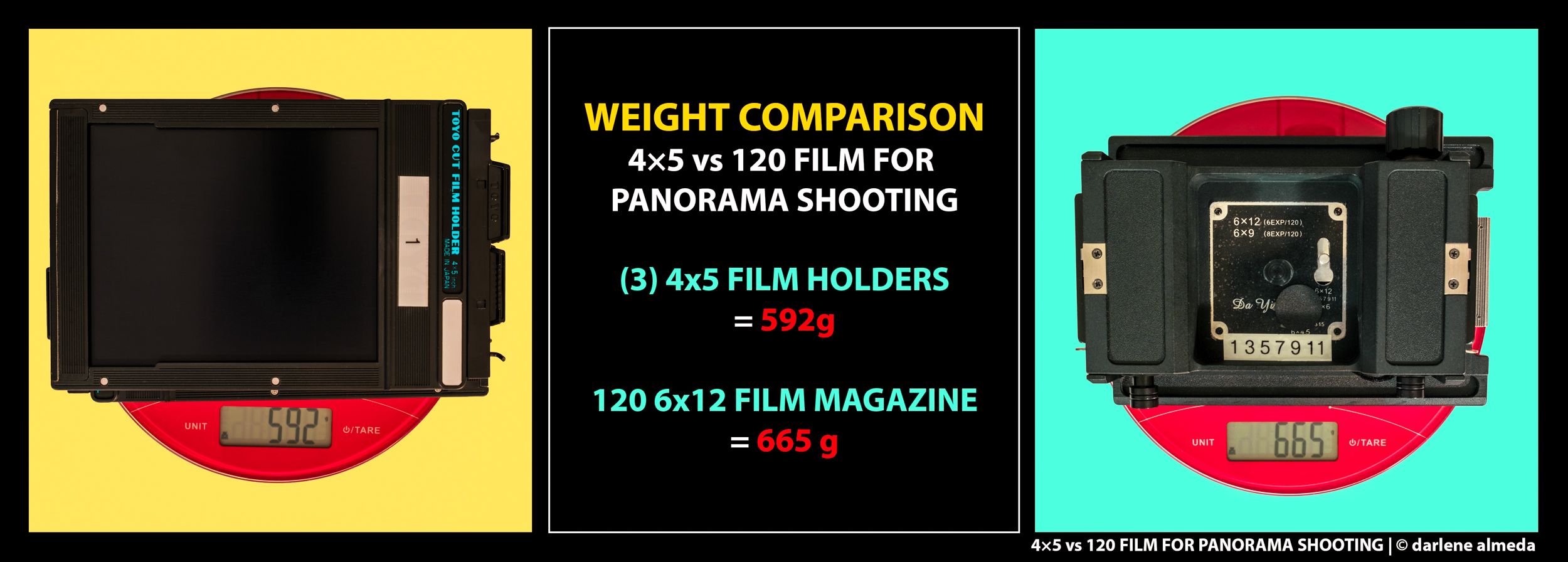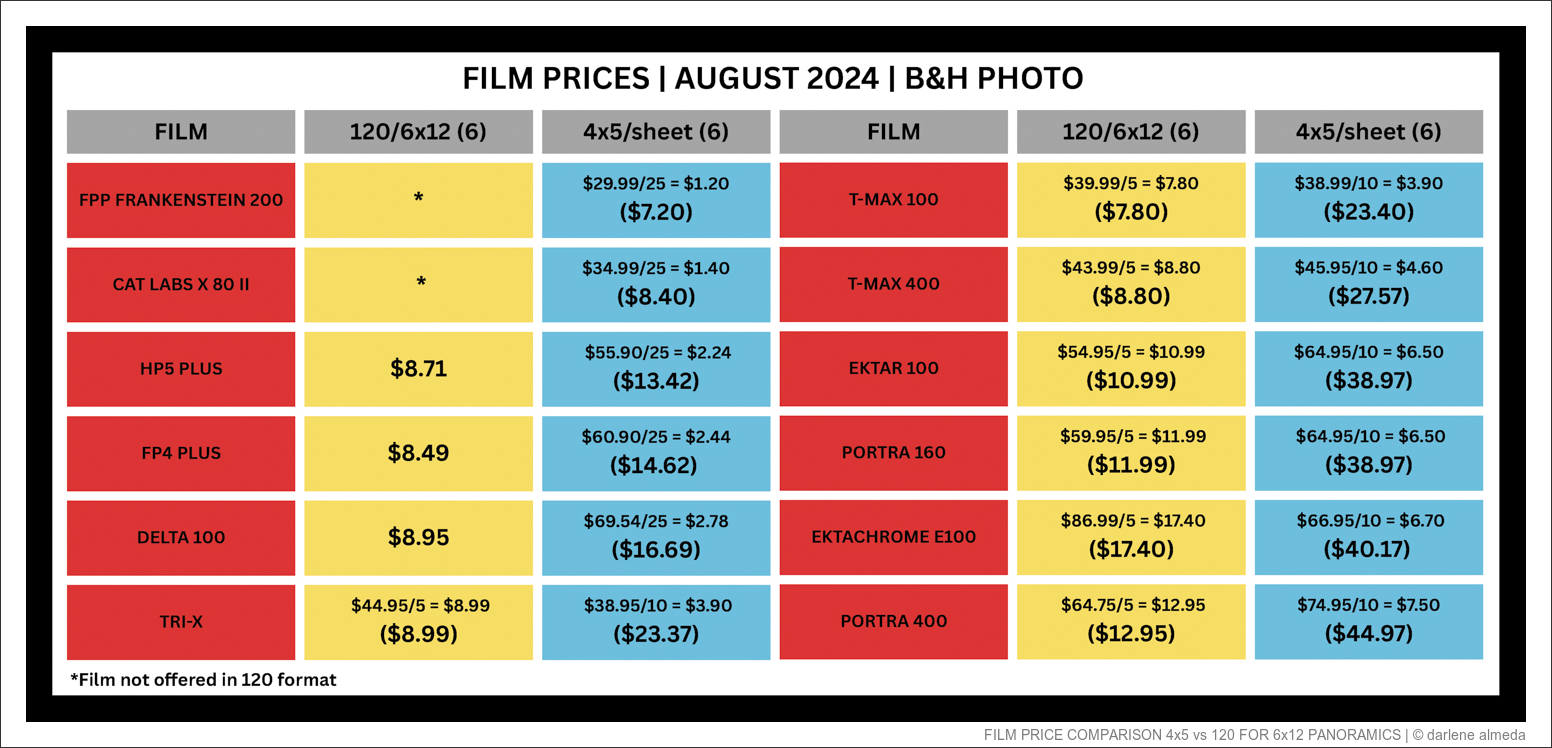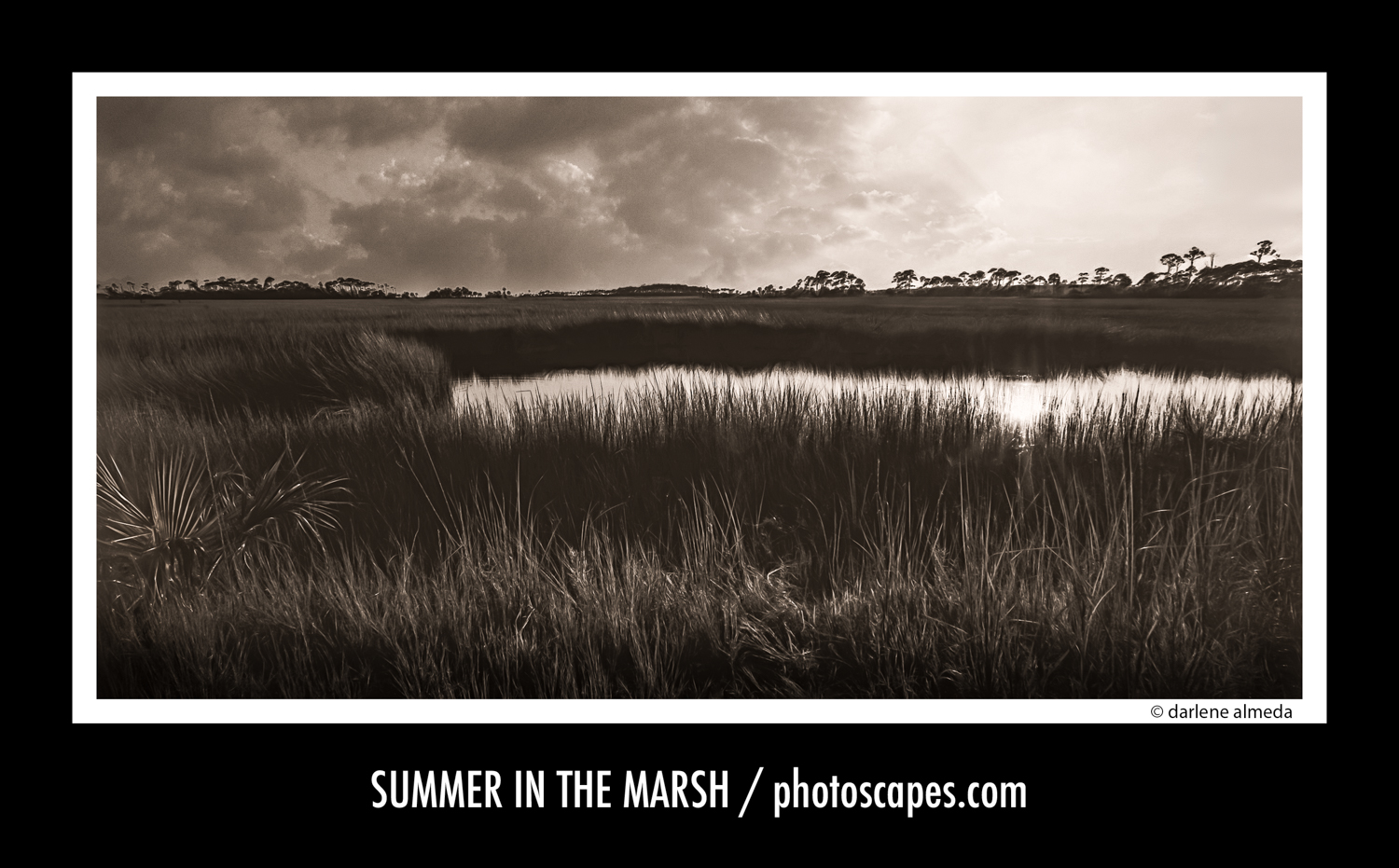4×5 vs 120 FILM FOR PANORAMA SHOOTING
TLDR:
Let me present the case for shooting 4×5 film instead of 120 film for 6×12 panoramas. I do this when shooting with my Cambo 650 or Ebony 4×5.
Overall, I’ve found 6×12 film magazines disappointing and have had a few (Horseman, Linhof, and Da Yi). I sold a lovely but heavy Linhof Techno Rollex because it would not fit onto my Ebony camera, but it did work well on my Cambo and Linhof cameras. The weight got to me, but it was the smoothest of all the 6×12 magazines I have experience with.
My latest, the Da Yi, has a top winding knob that does not clear the Graflok slider all the way. I can push the knob out a bit to make it work, but that is not a permanent fix.
Removing the ground glass is an extra step when shooting with a 120 film magazine, which increases the risk of accidents, especially in the landscape. Now that I’m using the Cambo viewing hood T-20, shooting 4×5 film allows me to leave it on and slide the film holder between the ground glass and the camera body. It is convenient, helps me work quicker, and makes me worry less about dropping something.
Additionally, 120 film magazines are heavier than three 4×5 film holders loaded with six film sheets; I know this because I weighed them loaded (see graphic above). So, with an equal number of shots, the 120 magazine weighs more and can be difficult to load (my current Da Yi back is particularly troublesome—consider this a warning against purchasing it). Plus, it’s just one more gadget to carry if you want to shoot 4×5 film as well.
FILM COST COMPARISONS
FILM PRICE COMPARISON 4×5 vs 120 FOR 6×12 PANORAMICS
While 120 film offers a broader variety of choices, often at a lower cost, some 4×5 black-and-white films are competitively priced—and a couple are even cheaper!
As shown in the chart above, based on current B&H Photo prices, two 4×5 black-and-white films, Film Photography Project’s “Frankenstein 200” and Cat Labs’ “X 80 II,” are currently priced lower than the most affordable 120 films listed in the chart.
You might be able to find a 120 film brand that’s less expensive but doesn’t come in 4×5 sheets. However, I’ve focused on the films I’m familiar with and those that are likely the most popular. While I haven’t tried Frankenstein 200 yet (It is generally believed that Frankenstein 200 is Fomapan 200), I can vouch for Cat Labs X 80 II, which I keep stocked in my freezer. As of this writing, B&H Photo has some Cat Labs X 80 II marked down to $29.99 (expiring 10/2024).
The cost comparison in the chart is based on six exposures from both 120 and 4×5 films. Interestingly, you don’t necessarily save money by purchasing 4×5 sheet film in quantities larger than 25 sheets, but it’s always good to check as film prices fluctuate frequently.
Currently, all the Kodak 120 film from B&H Photo are only available in pro packs (5 rolls). While Portra 400 is priced lower than Ektachrome in 120 format, Ektachrome is actually cheaper than Portra 400 in 4×5 format.
To calculate the per-sheet cost for 4×5 film from a box of 25 sheets, let’s use the popular HP5 Plus as an example:
$55.90 ÷ 25 sheets = $2.24 per sheet
Cost for six sheets = 6 x $2.24 = $13.42
Cost Difference (4×5 vs. 120) = $13.42 (4×5) – $8.71 (120) = $4.71
So, while 120 film might generally be more affordable, there are certainly cases where 4×5 can be a more economical choice.
IS IT WORTH SAVING $5 TO SHOOT 120?
CAMBO WIDE 650 + CAT LABS X 80 II + 510 PYRO
Is it worth saving $4.71 by choosing a roll of 120 HP5+ over six sheets of 4×5 HP5+?
I will answer this myself as I have been considering investing in another 6×12 magazine, specifically a Horseman. Since they are no longer in production, I’ll likely have to purchase one used. Most available options are from Japan, where the largest supply currently exists. I’m aiming for one in mint to near-mint condition, but it would cost me at least $700, including shipping.
Let’s break down the numbers: $700 divided by $4.71 equals approximately 149 rolls of 120 film. That means I would need to shoot 149 rolls of 120 film in the 6×12 format to break even when compared to using 4×5 film.
It’s just not worth it to me. I prefer not to lug around extra gear or remove the 4×5 ground glass. These days, I shoot predominantly black-and-white film, and the reason I gave up color film was digital got ‘good enough.’
Regarding processing, the costs are relatively equal for me since I am developing my film. I can load a 120 reel as quickly as I can load six sheets of 4×5 onto a Mod 54 reel in the same Paterson tank, and the chemistry amounts are similar. However, if you’re not processing your film, this could shift your break-even point.
One significant advantage of 4×5 film is its larger negative, which provides more flexibility for cropping than 120 film. On the other hand, 120 film is easier to store—just one Print File page compared to two pages for (6) 4×5 negatives. But I’ve been reusing old pages, so the cost difference is minimal for me.
For now, I’m sticking with 4×5 film for panoramas (image above made on 8/16/24), largely because the Da Yi film back is not fun to fiddle with. I’ve convinced myself that, economically and practically, 4×5 is the better choice for me right now, and I genuinely enjoy the process more.
If I ever change my mind, I’ll update this article! 🙂



